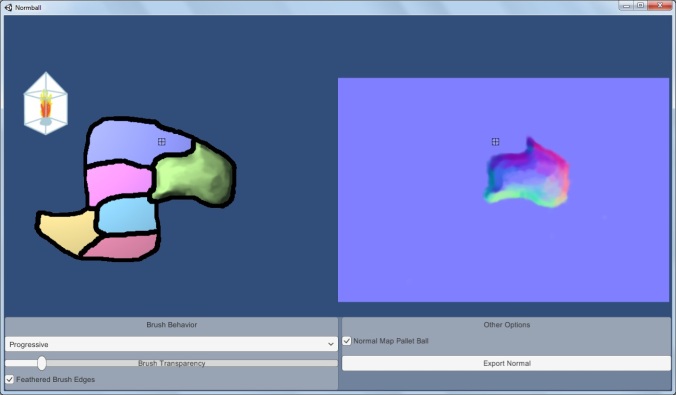Hey guys, so I’m thinking of changing some things up if I can, rather then the normal updates(we will instead only do those when something important comes up, XD) I’m going to try talking more about things that come up while we make our game and dealing with things that go with it.
Today, after talking last night and hashing it out, we decided it’s be a grand idea to add dynamic lighting to our 2d game. we had a few options, a gradient mask that would follow the sun’s track, by far the easiest, but also the worst looking, our other options was making a ‘normal map’ program, or using one called sprite lamp, a fascinating little program that creates a normal map by interpreting how you shade you 2d image using 2 or more of the same sprite with different lighting, up to 5 of them.
So, leaving up the decision to the lead programmer (always do that with caution http://www.xkcd.com/1319/ ) and we decided to make our own! The goal seems to be making a stand along version, but we decided to prototype it in unity, the program is meant have a artist ‘shade’ the sprite in the program, and it turns that shading into a normal map.
So 4 hours in, we run into unity wonkyness, first of, that unity uses a weird algorithm for it’s normal maps, as I’m told, RGB = Y, A = X in unity normal maps, we spend a good deal of those 4 hours thinking we have a bug before finding out it’s unity. So then our lead programer starts testing things, and then it seems the sprite he’s loading is too small! XD
This seems to be a effect of using a pre-built engine for your project, it will save you loads of time in that is spent making a engine, but there will be bugs and workarounds and some hassle as you try to fit the game to the engine or vise versa. My thoughts are that this is a lesson in deciding what engine to use, always think long and hard, engine making I’ve been told can add 1-2 years to your production, but there’s always a downside to other options.
Hope this was more interesting reading then usual! I’ll try to do this more if you guys like it! I think I’ll make our programmer share his thoughts on this project later, so look forward to that!
Jason, Mythwing Design Lead.
